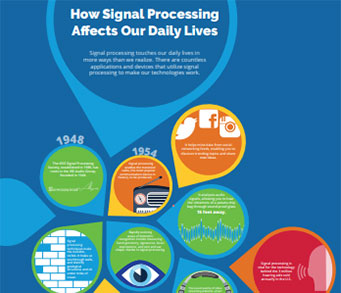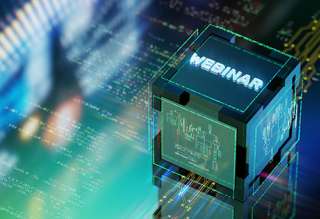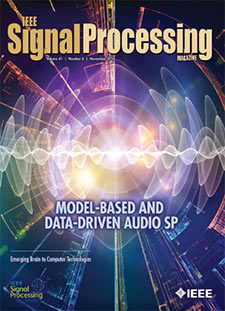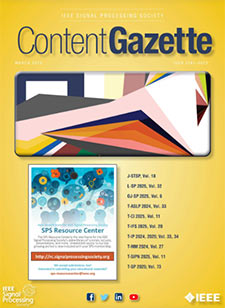- Our Story
- Publications & Resources
- Publications & Resources
- Publications
- IEEE Signal Processing Magazine
- IEEE Journal of Selected Topics in Signal Processing
- IEEE Signal Processing Letters
- IEEE Transactions on Computational Imaging
- IEEE Transactions on Image Processing
- IEEE Transactions on Information Forensics and Security
- IEEE Transactions on Multimedia
- IEEE Transactions on Signal and Information Processing over Networks
- IEEE Transactions on Signal Processing
- IEEE TCI
- IEEE TSIPN
- Data & Challenges
- Submit Manuscript
- Guidelines
- Information for Authors
- Special Issue Deadlines
- Overview Articles
- Top Accessed Articles
- SPS Newsletter
- SigPort
- SPS Resource Center
- Publications FAQ
- Blog
- News
- Dataset Papers
- Conferences & Events
- Community & Involvement
- Professional Development
- For Volunteers
- Information for Authors-OJSP
-
Home
Waveforms for Computing Over the Air: A groundbreaking approach that redefines data aggregation
Ode to Masterfully Written Textbooks: And remembering Simon Haykin [From the Editor]
Conferences Events IEEE Signal Processing Magazine IEEE SPL Article IEEE TIFS Article IEEE TMM Article IEEE TSP Article Jobs in Signal Processing Lectures Machine Learning Seasonal Schools Signal Processing News SPM Article SPS Distinguished Lectures SPS Newsletter Article SPS Webinar SPS Webinars SPS Webinar Series Webinar webinars -
Our Story
What is Signal Processing?

The technology we use, and even rely on, in our everyday lives –computers, radios, video, cell phones – is enabled by signal processing. Learn More » -
Publications & Resources
-
SPS Resources
- Signal Processing Magazine The premier publication of the society.
- SPS Newsletter Monthly updates in Signal Processing
- SPS Resource Center Online library of tutorials, lectures, and presentations.
- SigPort Online repository for reports, papers, and more.
- SPS Feed The latest news, events, and more from the world of Signal Processing.
-
SPS Resources
-
Conferences & Events
-
Community & Involvement
-
Membership
- Join SPS The IEEE Signal Processing Magazine, Conference, Discounts, Awards, Collaborations, and more!
- Chapter Locator Find your local chapter and connect with fellow industry professionals, academics and students
- Women in Signal Processing Networking and engagement opportunities for women across signal processing disciplines
- Students Scholarships, conference discounts, travel grants, SP Cup, VIP Cup, 5-MICC
- Young Professionals Career development opportunities, networking
- Get Involved
-
Technical Committees
- Applied Signal Processing Systems
- Audio and Acoustic Signal Processing
- Bio Imaging and Signal Processing
- Computational Imaging
- Image Video and Multidimensional Signal Processing
- Information Forensics and Security
- Machine Learning for Signal Processing
- Multimedia Signal Processing
- Sensor Array and Multichannel
- Signal Processing for Communication and Networking
- Signal Processing Theory and Methods
- Speech and Language Processing
- Technical Working Groups
- More TC Resources
-
Membership
-
Professional Development
-
Professional Development
- Signal Processing Mentorship Academy (SigMA) Program
- Micro Mentoring Experience Program (MiME)
- Distinguished Lecturer Program
- Distinguished Lecturers
- Distinguished Lecturer Nominations
- Past Lecturers
- Distinguished Industry Speaker Program
- Distinguished Industry Speakers
- Distinguished Industry Speaker Nominations
- Industry Resources
- IEEE Training Materials
- Jobs in Signal Processing: IEEE Job Site
-
Career Resources
- SPS Education Program Educational content in signal processing and related fields.
- Distinguished Lecturer Program Chapters have access to educators and authors in the fields of Signal Processing
- Job Opportunities Signal Processing and Technical Committee specific job opportunities
- Job Submission Form Employers may submit opportunities in the area of Signal Processing.
-
Professional Development
-
For Volunteers
-
For Board & Committee Members
- Board Agenda/Minutes* Agendas, minutes and supporting documentation for Board and Committee Members
- SPS Directory* Directory of volunteers, society and division directory for Board and Committee Members.
- Membership Development Reports* Insight into the Society’s month-over-month and year-over-year growths and declines for Board and Committee Members
-
For Board & Committee Members
Popular Pages
Today's:
- Congratulations to Signal Processing Society Members Elevated to Senior Members!
- Information for Authors
- Jobs in Signal Processing
- Update on the 2025 SPS Annual General Election Schedule
- (ASRU 2025) 2025 IEEE Automatic Speech Recognition and Understanding Workshop
- Inside Signal Processing Newsletter
- Membership
- Submit a Proposal for ICASSP 2030
- IEEE Transactions on Information Forensics and Security
- Meet SPS Member Ahmet Mete Elbir
- SPS Members Receive 2026 IEEE Technical Field Awards!
- Unified EDICS
- Information for Authors-SPL
- IEEE Transactions on Signal Processing
- IEEE Transactions on Image Processing
All time:
- Information for Authors
- Submit a Manuscript
- IEEE Transactions on Image Processing
- IEEE Transactions on Information Forensics and Security
- IEEE Transactions on Multimedia
- IEEE Transactions on Audio, Speech and Language Processing
- IEEE Signal Processing Letters
- IEEE Transactions on Signal Processing
- Conferences & Events
- IEEE Journal of Selected Topics in Signal Processing
- Information for Authors-SPL
- Conference Call for Papers
- Signal Processing 101
- IEEE Signal Processing Magazine
- Guidelines
Last viewed:
- Tiny-BDN: An Efficient and Compact Barcode Detection Network
- IEEE JSTSP Special Issue on Low-Bit-Resolution Signal Processing: Algorithms, Implementations, and Applications
- IEEE Transactions on Signal Processing
- Conferences Board
- Inside Signal Processing Newsletter
- Peyman Milanfar (Google Research)
- (ISBI 2026) 2026 IEEE 23rd International Symposium on Biomedical Imaging
- Call for Proposals: 2028 IEEE International Symposium on Biomedical Imaging (ISBI)
- (SPAWC 2025) 2025 IEEE Workshop on Signal Processing and Artificial Intelligence for Wireless Communications
- Submit a Proposal for ICASSP 2030
- Congratulations to Signal Processing Society Members Elevated to Senior Members!
- Guidelines for Reviewers
- Conferences & Events
- Call for Proposals: IEEE MLSP 2026
- IEEE Transactions on Image Processing
Newsletter Menu
Newsletter Categories
Top Reasons to Join SPS Today!
1. IEEE Signal Processing Magazine
2. Signal Processing Digital Library*
3. Inside Signal Processing Newsletter
4. SPS Resource Center
5. Career advancement & recognition
6. Discounts on conferences and publications
7. Professional networking
8. Communities for students, young professionals, and women
9. Volunteer opportunities
10. Coming soon! PDH/CEU credits
Click here to learn more.
News and Resources for Members of the IEEE Signal Processing Society
Member Highlight: Archana Venkataraman

Archana Venkataraman is an Associate Professor of Electrical and Computer Engineering at Boston University, MA. From 2016 to 2022, she was an Assistant Professor at The Johns Hopkins University, Baltimore, MD. Dr. Venkataraman directs the Neural Systems Analysis Laboratory and is affiliated with the Department of Biostatistics, the Department of Biomedical Engineering, the Rafik B. Hariri Institute for Computing, and the Faculty of Computing and Data Science at Boston University. Her research lies at the intersection of biomedical imaging, artificial intelligence, and clinical neuroscience. Her work has yielded novel insights into debilitating neurological disorders, such as autism, schizophrenia, and epilepsy, with the long-term goal of improving patient care. Dr. Venkataraman completed her B.S., M.Eng. and Ph.D. in Electrical Engineering at the Massachusetts Institute of Technology (MIT), Cambridge, in 2006, 2007, and 2012, respectively. She is a recipient of the MIT Provost Presidential Fellowship, the Siebel Scholarship, the National Defense Science and Engineering Graduate Fellowship, the NIH Advanced Multimodal Neuroimaging Training Grant, numerous best paper awards, and the National Science Foundation CAREER award. Dr. Venkataraman was also named by MIT Technology Review as one of 35 Innovators Under 35 in 2019.
1. Why did you choose to become faculty in the field of Signal Processing?
I have always been curious about the world, fascinated by the sights, sounds, and scents around me. My first signal processing class was a transformative experience that taught me how this real-world information can be mathematically represented as a signal and viewed through the complementary lenses of time and frequency. My first probability class gave me a glimpse into how the world is a random process, but we can still model this randomness and make principled decisions. Finally, my dissertation work introduced me to medical imaging and how we can use the basic tools of signal processing and stochastic inference to tackle meaningful challenges that impact people’s daily lives. Pursuing an academic position was a natural extension for me. It has been an incredibly fulfilling journey filled with tough problems, interesting ideas, and wonderful collaborations.
2. How does your work affect society?
My work focuses on better understanding and treating disorders of the brain. For example, my lab has pioneered new directions in the field of imaging-genetics, and specifically on analyzing human genetics using AI. Our strategy is to embed known biological structure into the neural network architectures to learn from small sample sizes of very complex data. Not only do our models achieve higher prediction accuracy, but they provide an interpretability that is rare in AI. On the translational front, I have done a lot of work on epilepsy, specifically on trying to localize the seizure onset zone using non-invasive data. Our models work on routinely acquired data and can easily be translated into a clinical setting. On the surgical side, we developed models to localize key areas of the brain, known as the eloquent cortex, from non-invasive functional MRI. Our algorithms provide additional insight to neurosurgeons to help them plan safe and effective operations.
3. What challenges have you had to face to get where you are today?
Academia is a bit of a “wild west” and required a mindset adjustment on my part. I had to go from simply creating new algorithms and publishing papers to building the entire infrastructure to sustain a lab (grant writing, mentoring, publicity) while also teaching, contributing to the university through service, and developing professional leadership. I like to say that an academic lab is a bit like a mini-startup, where the PI is the entire C-suite. With that said, starting my lab has been one of the most rewarding experiences, and I am constantly blown away by the energy, creativity, motivation, technical abilities, and collaborations with my students.
4. What advice would you give to scientists/engineers in signal processing?
My advice would be that great work comes from great collaborations and great partners. As engineers, we often get trapped in our own little bubble, where we are surrounded by other engineers with similar skill sets and mind sets. However, moving the needle to address the many urgent challenges of today — from health and medicine to energy and climate to security and privacy — will require interdisciplinary teams across different stakeholders, with everyone bringing different ideas and perspectives to the table.
5. Anything else that you would like to add?
You can visit the Neural Systems Analysis Laboratory website to learn more about my work.
Open Calls
Society News
- Call for Proposals for 2026 Signal Processing Cup
- Call for proposals: 2027 IEEE Conference on Artificial Intelligence (CAI)
- What’s Next for Speech Recognition? Explore the Innovations Shaping the Future — New Our Digital Life Podcast Episode
- Call for Nominations for Chair, Women in Signal Processing Committee (WISP)
- Call for Nominations for Chair, Scholarship Committee
- Call for Nominations for the SPS Chapter of the Year Award
- Call for Project Proposals: IEEE SPS SigMA Program - Signal Processing Mentorship Academy
- Job Opportunities in Signal Processing
Technical Committee News
SPS Social Media
- IEEE SPS Facebook Page https://www.facebook.com/ieeeSPS
- IEEE SPS X Page https://x.com/IEEEsps
- IEEE SPS Instagram Page https://www.instagram.com/ieeesps/?hl=en
- IEEE SPS LinkedIn Page https://www.linkedin.com/company/ieeesps/
- IEEE SPS YouTube Channel https://www.youtube.com/ieeeSPS
Home | Sitemap | Contact | Accessibility | Nondiscrimination Policy | IEEE Ethics Reporting | IEEE Privacy Policy | Terms | Feedback
© Copyright 2025 IEEE - All rights reserved. Use of this website signifies your agreement to the IEEE Terms and Conditions.
A public charity, IEEE is the world's largest technical professional organization dedicated to advancing technology for the benefit of humanity.









